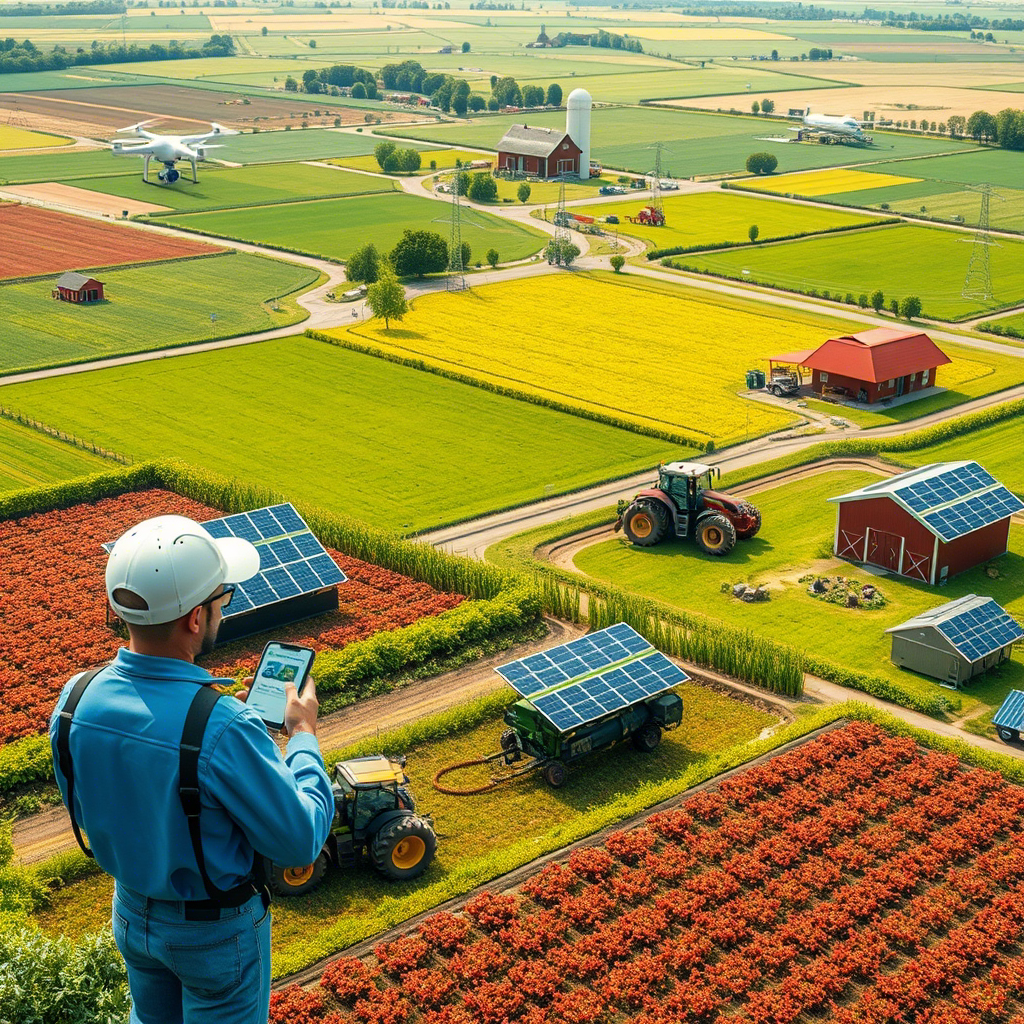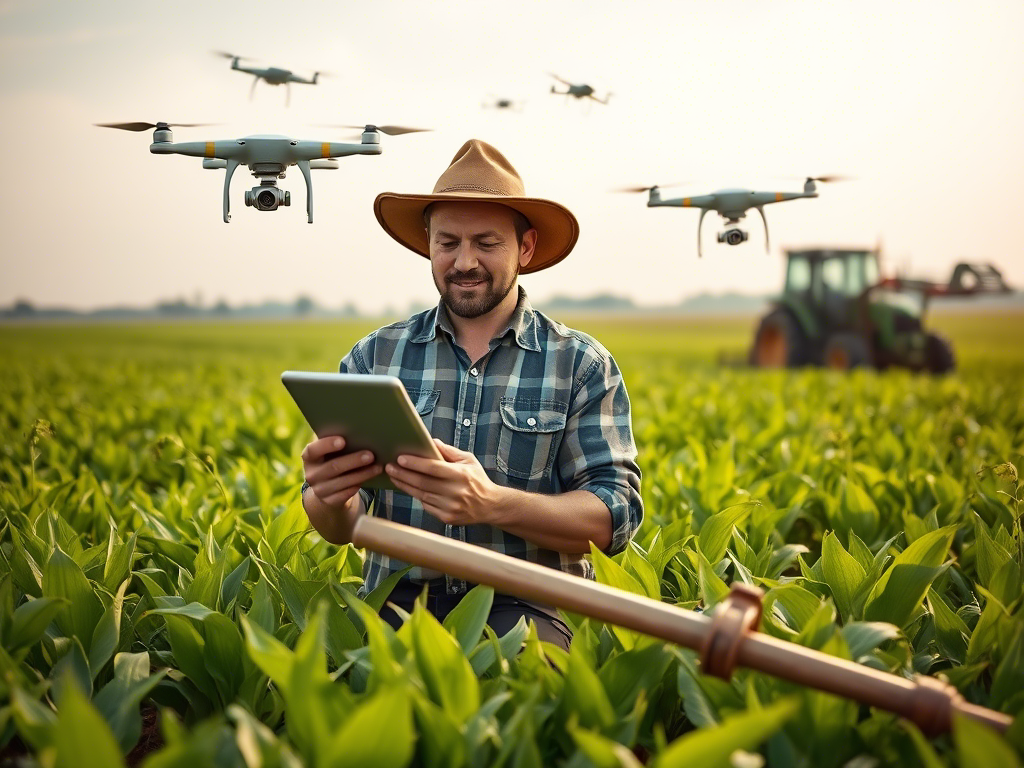As the global population approaches 9.7 billion by 2050, the demand for sustainable food production intensifies. Traditional farming, the backbone of agriculture for centuries, faces challenges from climate change, resource depletion, and labor shortages. Integrating technology into these practices by 2025 offers a solution, enhancing productivity while preserving cultural heritage. This article explores key technologies, their benefits, challenges, and real-world applications, providing a comprehensive roadmap for a tech-driven agricultural future.

Key Technologies for Integration
- IoT and Sensors
Applications: Soil moisture sensors, weather stations, and livestock trackers enable real-time monitoring.
Benefits: Optimized irrigation, reduced waste, and improved crop health.
Challenges: High initial costs and connectivity issues in rural areas.
Example: Indian farmers using IoT-enabled drip irrigation systems reduced water usage by 30%. - Drones and UAVs
Applications: Aerial imaging, crop spraying, and land mapping.
Benefits: Precision agriculture, reduced chemical use, and time efficiency.
Challenges: Regulatory hurdles and pilot training requirements.
Case Study: Kenyan coffee farms using drones for pest control saw a 20% yield increase. - AI and Machine Learning
Applications: Predictive analytics for weather, disease detection, and yield forecasting.
Benefits: Data-driven decisions, early threat identification.
Challenges: Data privacy concerns and need for large datasets.
Example: AI apps in Brazil predict frost events, allowing preemptive crop protection. - Robotics and Automation
Applications: Autonomous tractors, robotic harvesters.
Benefits: Labor cost reduction, 24/7 operations.
Challenges: High upfront investment and maintenance.
Case Study: Japanese robotic lettuce harvesters increased efficiency by 50%. - Blockchain for Supply Chains
Applications: Traceability from farm to table, fair pricing.
Benefits: Transparency, reduced fraud.
Challenges: Adoption resistance and technical complexity.
Example: Ghanaian cocoa farmers using blockchain secured 15% higher premiums. - Mobile Applications
Applications: Market access, financial services, knowledge sharing.
Benefits: Empowered smallholders, reduced middlemen.
Challenges: Digital literacy gaps.
Example: AgriApp in Nigeria connects 500,000 farmers to buyers directly.
Table 1: Technology Comparison
| Technology | Application | Benefits | Challenges |
|---|---|---|---|
| IoT & Sensors | Soil/Climate Monitoring | Resource Efficiency | High Initial Cost |
| Drones | Crop Spraying | Precision Application | Regulatory Barriers |
| AI/ML | Predictive Analytics | Risk Mitigation | Data Privacy Issues |
| Robotics | Harvesting | Labor Savings | Maintenance Costs |
| Blockchain | Supply Chain Transparency | Fair Trade | Adoption Resistance |
| Mobile Apps | Market Access | Direct Sales | Digital Literacy |
Benefits of Integration
- Sustainability: Reduced water/chemical use lowers environmental impact.
- Productivity: AI-driven insights can boost yields by up to 25%.
- Resilience: Real-time data helps farmers adapt to climate variability.
- Economic Growth: Transparent supply chains increase farmer profits.
Table 2: Impact Metrics (2025 Projections)
| Metric | Improvement (%) | Technology Driver |
|---|---|---|
| Crop Yield | 20-30% | AI, IoT |
| Water Use Efficiency | 35-40% | Smart Irrigation |
| Labor Costs | 15-25% | Robotics |
| Market Access | 50% | Mobile Apps |
Challenges and Solutions
- Cost Barriers: Subsidies and leasing models can democratize access.
- Training Needs: Government-NGO partnerships for farmer education.
- Infrastructure Gaps: Investment in rural broadband and energy grids.
Case Studies
- India’s IoT Revolution: Sensor-based systems in Punjab reduced groundwater extraction by 40%.
- Kenyan Drone Networks: UAVs monitor 10,000 acres of tea plantations, cutting disease spread.
- Blockchain in Vietnam: Rice exports to Europe increased by 22% due to traceability.
Table 3: Case Study Snapshot
| Region | Technology | Outcome |
|---|---|---|
| India | IoT | 40% Water Savings |
| Kenya | Drones | 20% Yield Increase |
| Vietnam | Blockchain | 22% Export Growth |
Future Trends Beyond 2025
- AI-Powered Gene Editing: Drought-resistant crops developed via CRISPR and AI.
- Vertical Farming Integration: Urban farms using traditional crop varieties.
- Carbon Credit Platforms: Farmers earning credits via sustainable practices.

Table 4: Future Trends
| Trend | Potential Impact | Timeline |
|---|---|---|
| AI-Driven Gene Editing | Climate Resilience | 2025-2030 |
| Vertical Farming | Urban Food Security | 2025+ |
| Carbon Markets | Additional Revenue Streams | 2026+ |
Conclusion
The fusion of technology and tradition by 2025 promises a resilient agricultural sector. While challenges persist, collaborative efforts among governments, tech firms, and farmers can ensure equitable access. Embracing this synergy will safeguard food security, honor cultural heritage, and pave the way for a sustainable future.
